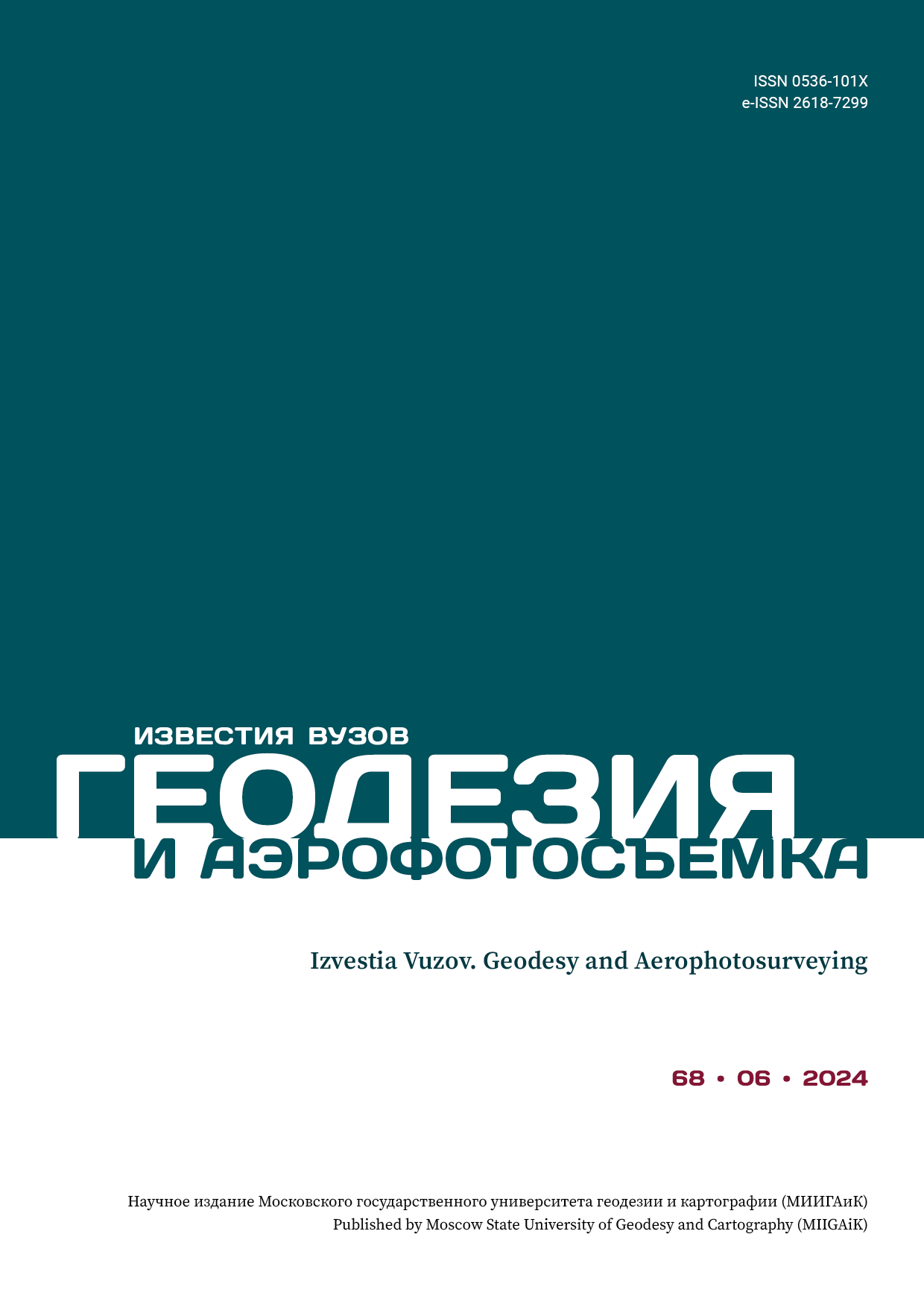UDC 528.92
CSCSTI 36.33
Approaches to formalization of expert cartographic knowledge for further development of artificial intelligence technologies are discusses. It is noted that among other objects of formalization, an important role is played by the internal structure of the digital map, which is formed using the digital form of presentation of cartographic information, while the methodology of mapping changes. Digital maps are currently created in software packages belonging to different classes: graphic design programs, computer-aided design systems, geographic information systems. The article analyzes the differences in the internal structure of a digital map depending on the software used (graphic editors, computer-aided design systems, geographic information systems) and data presentation models (vector, raster). The author proposes to consider a digital map as a set of structural elements and structural models, which through the emergence of new functions leads to the emergence of new technological properties of the digital map: adaptability, interactivity, multi-scale. Also the concept of invariance of structural elements of the map, which allows estimating the degree of variability of the form and content of the map during its creation and use. To formalize the stage of designing a digital map, criteria for choosing a digital environment are proposed. The result of the study are provisions that reveal the structural and functional apparatus of the digital map in verbal and formal representations.
mapping, robotization, formalization, digital map structure, invariance of structural elements of the map
1. Lisickiy D.V. Kartografiya v epohu informatizacii: novye zadachi i vozmozhnosti // Geografiya i prirodnye resursy. 2016. № 4. S. 22–28. DOI:10.1134/ S187537281604003X.
2. Karpik A.P., Lisickiy D.V. Perspektivy razvitiya geodezicheskogo i kartograficheskogo proizvodstva i novaya paradigma geoprostranstvennoy deyatel'nosti // Vestnik SGUGiT. 2020. T. 25. № 2. S. 19–29. DOIhttps://doi.org/10.33764/2411-1759-2020-25-2-19-29.
3. Andryuhina Yu.N., Bugakov P.Yu., Kas'yanova E.L. i dr. Cifrovaya kartografiya: monografiya / pod nauch. red. D.V. Lisickogo. Novosibirsk: SGUGiT, 2023. 442 s.
4. Yuhao K., Gao S., Roth R.E. Artificial Intelligence Studies in Cartography: A Review and Synthesis of Methods, Applications, and Ethics // Cartography and Geographic Information Science. 2024. Vol. 51. No. 4. P. 599–630. DOIhttps://doi.org/10.1080/15230406.2023.2295943.
5. Harrie L., Touya G., Oucheikh R., et al. Machine learning in cartography // Cartography and Geographic Information Science. 2024. Vol. 51. No. 1. P. 1–19. DOIhttps://doi.org/10.1080/15230406. 2023.2295948.
6. Talipova L., Grebenyuk E., Ogurtsov G., et al. Perspectives of Interactions CAD and GIS Systems // Proceedings of International Scientific Conference on Socio-Technical Construction and Civil Engineering – 2022. Cham: Springer, 2022. Vol. 291. P. 449–464. DOIhttps://doi.org/10.1007/978-3-031-14623-7_39.
7. Saganiak K., Buketov V. Integrating mining software, CAD, and GIS technologies for enhanced 3D geological mapping and visualization // E3S Web of Conferences. 2024. Vol. 567. 01021. DOIhttps://doi.org/10.1051/e3sconf/202456701021.
8. Poshivaylo Ya.G. Analiz strukturnyh elementov cifrovoy tematicheskoy karty // Sbornik materialov XVI Mezhdunarodnogo nauchnogo kongressa «Interekspo GEOSibir'»: v 8 t. Novosibirsk: SGUGiT, 2020. T. 1. № 2. S. 62–67. DOIhttps://doi.org/10.33764/2618-981X-2020-1-2-62-67.
9. Kacko S.Yu. Neogeografiya i kartografiya // Sbornik materialov IX Mezhdunarodnogo nauchnogo kongressa «Interekspo GEO-Sibir'»: v 8 t. Novosibirsk: SGGA, 2013. T. 2. S. 102–106.
10. Samsonov T.E. Mul'timasshtabnoe kartografirovanie — novoe napravlenie kartografii // Sovremennaya geograficheskaya kartografiya: sbornik statey / pod red. I.K. Lur'e, V.I. Kravcovoy. M.: DATA+, 2012. S. 21–35.
11. Krylov S.A. Avtomatizaciya otbora obschegeograficheskih ob'ektov pri sozdanii mul'timasshtabnyh kart // Sbornik materialov XVII Mezhdunarodnogo nauchnogo kongressa «Interekspo GEO-Sibir'»: v 8 t. Novosibirsk: SGUGiT, 2021. T. 1. S. 178–183. DOIhttps://doi.org/10.33764/2618-981X-2021-1-178-183.
12. Feschenko A.P., Krylov S.A. Principy sozdaniya i razmescheniya podpisey naselennyh punktov na mul'timasshtabnoy karte // Sbornik materialov XIX Mezhdunarodnogo nauchnogo kongressa «Interekspo GEO-Sibir'»: v 8 t. Novosibirsk: SGUGiT, 2023. T. 1. № 2. S. 86–93. DOIhttps://doi.org/10.33764/2618-981X-2023-1-2-86-93.
13. Viaña R., Magillo P., Puppo E. Multi-Scale Geographic Maps // Advances in Multiresolution for Geometric Modelling. Berlin, Heidelberg: Springer, 2005. P. 101–115. DOIhttps://doi.org/10.1007/3-540-26808-1_6.
14. Demidenko A.G., Kirichenko A.S., Kruzhkov A.E. Tehnologiya avtomatizirovannoy generalizacii dlya sozdaniya mul'timasshtabnyh kart // Geoprofi. 2019. № 6. S. 16–19.
15. Samsonov T.E. Avtomatizirovannoe sovmeschenie cifrovoy modeli rel'efa i vektornyh dannyh o gidrograficheskoy seti // Geoinformacionnoe kartografirovanie v regionah Rossii: materialy XI Vserossiyskoy nauchnoprakticheskoy konferencii. Voronezh: Cifrovaya poligrafiya, 2020. S. 294–301.
16. Shurygina A.A., Samsonov T.E. Avtomatizirovannoe raspoznavanie regulyarnyh, radial'nyh i kol'cevyh struktur v konfiguracii ulichno-dorozhnoy seti naselennyh punktov // Materialy Mezhdunarodnoy konferencii «InterKarto. InterGIS». M.: Izd-vo Moskovskogo universiteta, 2020. T. 26. № 1. S. 410–420. DOIhttps://doi.org/10.35595/2414-9179-2020-1-26-410-420.
17. Samsonov T.E., Prohorova E.A. Generalizaciya transportnyh setey pri mul'timasshtabnom kartografirovanii // Izvestiya Rossiyskoy akademii nauk. Seriya geograficheskaya. 2019. № 1. S. 107–117. DOIhttps://doi.org/10.31857/S2587-556620191107-117.
18. Brovko E.A., Sofinov R.E. Progressivnye metody avtomatizirovannoy generalizacii cifrovogo kartograficheskogo izobrazheniya v processe gosudarstvennogo topograficheskogo monitoringa // Mezhdunarodnyy god kart v Rossii: ob'edinyaya prostranstvo i vremya: cbornik tezisov Vserossiyskoy nauchnoy konferencii. M.: MGU, 2016. S. 40–41.
19. Ajdacka I., Karsznia I. Verifying and improving map specifications of river network selection for automatic generalization of small-scale maps // Polish Cartographical Review. 2022. Vol. 54. P. 75–91. DOIhttps://doi.org/10.2478/pcr-2022-0006.
20. Lisickiy D.V., Osipov A.G., Savinyh V.N. Cifrovoy dvoynik territorii i metody geokognitivnogo modelirovaniya // Sbornik materialov XVIII Mezhdunarodnogo nauchnogo kongressa «Interekspo GEO-Sibir'»: v 8 t. Novosibirsk: SGUGiT, 2022. T. 1. S. 206–212. DOIhttps://doi.org/10.33764/2618-981X-2022-1-206-212.





